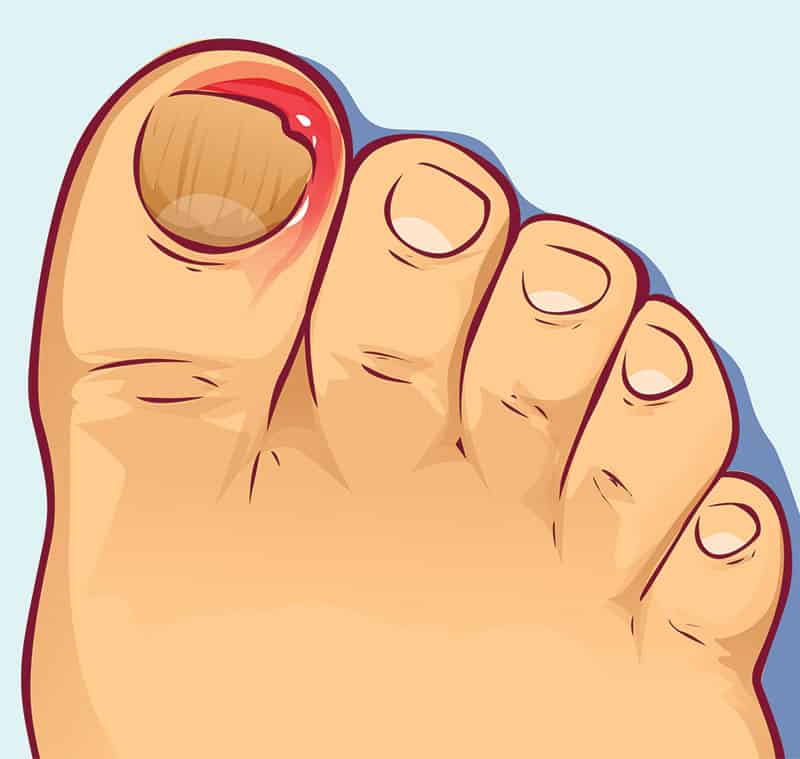Ingrown Toenails
Ingrown Toenail Symptoms, Causes and Treatment
About Ingrown Toenails
Ingrown Toenail Treatment can help alleviate the symptoms of this foot condition, which include pain, soreness, swelling, and redness around the nail. Ingrown toenails can be painful when wearing tight shoes, playing sports or simply by walking a great deal.
Another reason you may experience ingrown toenails is due to nerve damage in the foot or leg. This is due to poor blood circulation to the foot or an infection around the toenail. If this occurs, it is recommended you contact our office and make an appointment with the foot doctor immediately.
DO NOT attempt to treat ingrown toenails yourself.

Causes of Ingrown Toenails
Ingrown toenails can be the result of a low or lengthened nail bed, which results in the nail being unable to grow over the proximal nail fold. It will then grow into the skin and results in inflammation and irritation. When the nail pierces the skin, a bacterium infects the wound and tissue can form.
Other causes include incorrect or ineffective nail trimming, ill-fitting shoes, or a genetic condition. Nail picking and injuries are also common causes.
Ingrown Toenail Treatment
Treatment for this medical malady is utilized to control infections caused by the nail and to relieve pain. The condition may become serious in people who suffer from diabetes, have nerve problems or poor blood circulation. If you find yourself facing this difficulty always, seek out medical help immediately.
In order to prevent any future reappearance of ingrown nails, it is recommended you practice good foot care.
Non-Surgical/Non-Intrusive Ingrown Toenail Treatment
There are two types of treatment: non-intrusive and surgical. Upon completion of an assessment, your doctor will identify which is most suited to your condition and advise you accordingly whether or not you may need ingrown toenail surgery. Your doctor will exam your toenail that is causing you pain and advise any or all of the following after examination of your nail including:
- Practicing good foot care
- Soaking your feet
- Trimming your nails properly
- Avoiding shoe pressure on the nails
- Applying antibiotics on toenail infections
- Using nail braces – a less known treatment whereby the braces lift the sides of the nail and retrain the toenail to grow in a flat shape over time. The time period for full growth is approximately one and a half years.
Intrusive Treatments/Ingrown Toenail Surgery
If you have attempted non-intrusive therapies without success, it may be worthwhile looking into surgical treatments. Less intrusive techniques may be used for a minor ingrown nail; however, more severe cases may require a matrixectomy. The two surgical options are discussed below:
- The first surgical approach is known as a wedge resection. whereby a segment of the lateral nail plate is removed. Of course, one also has the option of removing the entire toenail.
- The second surgical approach should be utilized only if the ingrown toenail resurfaces in spite of the above procedure. This involves a chemical treatment to remove the germinal matrix.
All Foot & Ankle Conditions We Treat
Advanced Foot & Ankle Solutions
Have Questions or Need Care?
We’re here to help! Schedule your appointment online now for fast and easy care.
